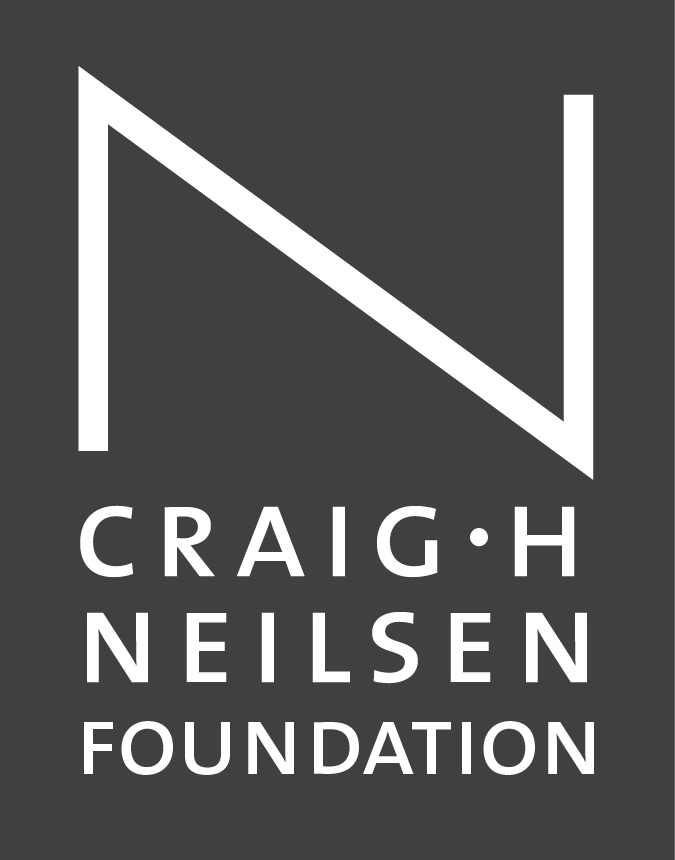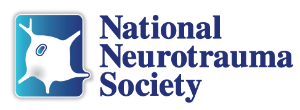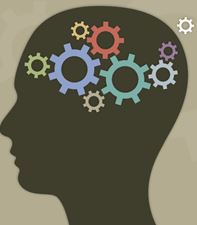Main Menu
Monday, June 29 2015
7:00-8:00am
POSTER SESSION I: Group A / Author Presentations for Groups A1-A4
Continental Breakfast
 Sweeney Ballroom A-D
Sweeney Ballroom A-D
8:00-9:15am
PL1: NEW INVESTIGATORS AND NEW VISIONS FOR CNS INJURY RESEARCH
 Sweeney Ballroom E-F
Sweeney Ballroom E-F
Chair – Diane Snow, PhD, Univ. Kentucky / Co-Chair – Gregory Holmes, PhD, Penn State
- Michael Lane, PhD, Drexel University, Enhancing Respiratory Plasticity Following Cervical Spinal Cord Injury
- Travis Jackson, PhD, Univ of Pittsburgh; RNA Splicing in CNS Damage: Diagnosing the Injured Spliceosome
- Monica Perez, PhD, Univ of Pittsburgh; Plasticity in the Corticospinal System After SCI
Description: Multidisciplinary approaches are now being utilized to investigate and treat the detrimental consequences of brain and spinal cord injury. The use of new tools and experimental approaches in preclinical and clinical investigations are helping to move neurotrauma research forward. This session will highlight several new strategies for investigating the pathophysiology of TBI and SCI and emphasize new targets for therapeutic intervention.
Objectives: 1) Participants will become aware of treatment strategies to improve respiratory function after spinal cord injury. 2) Will be able to better understand molecular approaches to investigating genetic factors involved in CNS injury and repair. 3) Understand how the neural control of motor function is altered after spinal cord injury using electrophysiological approaches.
9:15-10:30am
S01: CLINICALLY RELEVANT MODELS OF NEUROINFLAMMATION AFTER TBI
 Sweeney Ballroom E-F
Sweeney Ballroom E-F
Chair – Courtney Robertson, MD, Johns Hopkins / Co-Chair – Susanna Rosi, PhD, UCSF
- Sujatha Kannan, MD, Johns Hopkins; Neuroinflammation in the Developing Brain After Injury
- Catharine Winstanley, PhD, Univ. of British Columbia; Frontal Lobe Injury and Higher-Order Cognitive Functions
- Cesar Borlongan, PhD, Univ. of South Florida; Treatments to Target Neuroinflammation
Post-traumatic neuroinflammation can begin early after TBI and persist for years, making it a significant contributor to secondary injury. Recent evidence suggests that pathways of neuroinflammation and microglial activation may be age-based, with the young, developing brain and the older, aged brain demonstrating unique pathways and timelines of neuroinflammation after injury. Using a translational platform, this session proposes to cover age-based aspects of post-traumatic neuroinflammation, and to describe the application of advanced neuroimaging techniques to evaluate post-traumatic neuroinflammation.
Objectives: 1) Recognize unique aspects of neuroinflammation after TBI in the developing brain; 2) Understand the contribution of aging on the post-traumatic neuroinflammatory profile, 3) Understand the role of advanced neuroimaging when defining functional deficits after TBI, and the role that inflammation plays in brain repair.
9:15-10:30am
 O'Keeffe Room
O'Keeffe Room
Chair – Kim Anderson-Erisman, PhD, Univ. of Miami
- Susan Charlifue, PhD, Craig Hospital, 40 Years of Living with SCI - Physical & Psychological Changes Over Time
- Christine Thomas, PhD, Univ of Miami; Muscle Changes with SCI and Age
- Rachel Cowan, PhD, Univ. of Miami; Accelerated Aging After SCI
Sponsored by 
Age plays a significant role in the development and human experience of the consequences of neurotrauma. Evidence from human studies is emerging on the impact of age on outcomes following traumatic spinal cord injury. These data provide an ideal basis where increased understanding of the clinical data can feed back to the bench to investigate mechanisms and potential intervention.
Evidence is emerging on the impact of age on outcomes following trauma-induced spinal cord injury in humans. This is in regard to the age at which the injury occurs as well as aging with an injury. Two components of the current epidemiology of spinal cord injury stress the need for more research regarding age and aging after injury. First, the average age at injury has been increasing. In the 1970"s the average age at injury in the United States was 28.7 years. Since 2010, the average age at injury has been 42.6 years. Second, improvements in medical management have increased the number of people surviving past the first year post-injury. Thus, there is a growing population of people aging with spinal cord injury. In this session, each speaker will discuss the impact of age on specific outcomes in human spinal cord injury. This is an ideal situation in which understanding the clinical data can feed back to the bench to investigate mechanism and potential intervention.
Objectives: 1) Participants will become aware of clinical evidence regarding the impact of age and aging on muscle properties, pain, and general aspects of health; 2) Participants will learn about the different concepts of age at injury versus aging with an injury; 3) Participants will learn of the importance of utilizing clinical data to better investigate and translate mechanisms underlying the effect of age and aging after spinal cord injury; 4) Participants will be able to describe the evidence supporting and potential mechanisms underlying the theory that people with SCI experience accelerated aging.
9:15-10:30am
S03: NOVEL AND EMERGING IMAGING FOR DETECTION AND DIAGNOSIS OF TBI
 Coronado Room
Coronado Room
Chair – Andre Obenaus, PhD, Loma Linda University / Co-Chair – Timothy Duong, PhD, Univ. of Texas HSC
- Andrew Mayer, PhD, Univ of New Mexico, Magnetic Resonance Neuroimaging of Mild TBI
- Timothy Duong, PhD, Univ. of Texas HSC; MRI of Experimental TBI
- Ramon Diaz-Arrastia, MD, PhD, USUHS; Clinical Phenotype of Traumatic Vascular Injury and Possible Therapeutic Implications
Clinical neuroimaging plays an important role in identifying brain and spinal cord injuries. Similarly our understanding of physiological and pathology of TBI has been aided by imaging of animal models of TBI. Structural and diffusion tensor imaging are now entering the clinical realm as premier diagnostic tools. In this session, we will highlight several new and emerging imaging techniques that we believe will further contribute to our understanding of the pathophysiology of TBI. Herein, we present new advances that could be used clinically, including vascular imaging and use of magnetoencephalography to map brain function. More advanced imaging techniques to study the pathology in animals models of TBI and spinal cord injuries will also be highlighted. Advances in two-photon imaging provide direct visualization of cellular alterations within the brain after TBI. In addition, MRI tools and techniques that are not routinely used clinically will be highlighted, with particular emphasis on use in animal models of TBI. Together our proposed session will engage the clinical and scientific community in opening new vistas to assist in detection, diagnosis and gauging the therapeutic effectiveness of new therapies.
Objectives: 1) Introduce new clinically relevant imaging techniques that can be utilized to detect and diagnose TBI/SCI and effectively monitor outcomes; 2) Discuss new imaging techniques that are currently being used in animal models, but have the potential to inform future clinical practices; 3) Provide new ideas and concepts about imaging to the TBI community that are currently not mainstream; 4) Provide a forum for discussion between clinical practitioners and basic scientists on future directions for neuroimaging of TBI/SCI that ultimately will serve TBI/SCI patients; 5) Describe new imaging methods/results that can be used clinically or in their research endeavors.
11:00-12:15pm
S04: PROGENITOR CELL THERAPY FOR ADULT TBI: PRECLINICAL FINDINGS AND CLINICAL OUTCOMES
 Sweeney Ballroom E-F
Sweeney Ballroom E-F
Chair – Linda Ewing-Cobbs, PhD, Univ. of Texas HSC / Co-Chair – Charles Cox, Jr.PhD, Univ. of Texas HSC
- Charles Cox, Jr., PhD, Univ. of Texas HSC; Cellular Therapies for TBI – Targets & Approach
- Pramod Dash, PhD, Univ. of Texas HSC; Preclinical Models of Cellular Therapy: Inflammatory Response
- Linda Ewing-Cobbs, PhD, Univ. of Texas HSC and Jennifer Juranek, PhD, Univ. of Texas HSC; Neuroimaging & Functional Outcomes After Cellular Therapy For Severe Adult TBI
Sponsored by ![]()
The symposium will present preclinical findings examining biodistribution and potential neuroinflammatory modulation mechanisms of action of intravenously injected BMMNCs. Clinical data were obtained from three cohorts of five patients and a nontreated control cohort with Glasgow Coma Scale scores of 5 to 8 enrolled in a dose escalation study. Longitudinal clinical, neuroimaging, and neuropsychological outcome data will be presented. Bone marrow harvest hemodynamics, characterization of cells and doses, and acute multi-organ safety monitoring procedures are discussed. Systemic pro- and anti-inflammatory cytokines were measured longitudinally, and correlated with injury severity/treatment. Secondary aims examined whether MSCs showed neuroprotective effects characterized by preservation of corpus callosum volume and integrity on serial structural neuroimaging studies conducted at 1 month and 6 months after TBI. The impact of BMMNC dose on neuropsychological outcomes was evaluated 1 and 6 months after injury. Long-term functional and cognitive outcomes were significantly related to the integrity of callosal subregions.
Objectives: 1.Understand methodology for safety of harvest and transplantation of bone marrow mononuclear cells (BMMNCs) in clinical settings; 2. Characterize preclinical studies examining biodistribution and putative mechanisms of action of intravenously administered BMMNCs; 3. Describe longitudinal neuroimaging findings in adults with severe TBI after treatment with BMMNCs; 4. Describe long-term functional outcomes in adults with severe TBI after treatment with BMMNCs and relation of outcomes to the integrity of the corpus callosum
11:00-12:15pm
S05: THE ROLE OF apoE AND APOE GENOTYPE IN OUTCOME AFTER TBI
 Coronado Room
Coronado Room
Chair – Mark Burns, PhD, Georgetown University / Co-Chair: Barry Jordan, MD, Burke Rehabilitation Hospital
- Mark Burns, PhD, Georgetown University; APOE4 is a Risk Factor for Poor Outcome After TBI - Clinical and Preclinical Evidence
- Fiona Crawford, PhD, The Roskamp Institute; The Effects of APOE4 Genotype on Proteomic and Lipidomic Response to Injury in Different Models of TBI
- Michael Vitek, PhD, Duke University; Neuroprotective and Anti-Inflammatory Therapies for CNS Injury Based Upon Apolipoprotein-E
The apoE protein is an important brain apolipoprotein whose primary function is as a cholesterol transporter. Through various mechanisms, it has also been found to be an important mediator of cell migration, synaptic plasticity, microtubule stability, nerve regeneration and amyloid clearance - making apoE a viable target for the treatment of TBI. The apoE protein is produced from the APOE gene. There are 3 APOE alleles in humans: APOE-ε2, ε3, and ε4. The ε4 allele is present in ~24% of the population and is associated with poor outcome after moderate to severe TBI. These outcomes include increased coma time, increased odds of a poor prognosis and increased risk of developing Alzheimer"s disease (AD) in later life. The ε4 allele is also associated with poor prognosis following repeat concussion, with higher severity of traumatic encephalopathy occurring in ε4 boxers exposed to high levels of repeat mTBI. In this symposium we examine the role of the APOE gene, and the apoE protein, on outcome after TBI. We will focus on 3 areas of interest: Clinical evidence, Preclinical evidence and ApoE based therapeutics.
Objectives: 1) understand the normal function of apoE, and how the levels of apoE in the brain are changed by TBI, 2) list the three different APOE alleles that exist, and know how possession of the APOE4 allele alters short and long term prognosis after TBI in humans; 3) appreciate that TBI-induced proteomic and genomic changes are different in mice expressing the APOE4 gene compared to the APOE3 gene; 4) reflect on apoE as a potential therapeutic target for the treatment of TBI; 5) understand how to pharmacologically target the apoE protein; 6) determine if APOE genotype status should be included as a common data element for TBI clinical trials.
11:00-12:15pm
S06: GENETIC DISSECTION OF LOCOMOTOR CIRCUITRY
 O'Keeffe Room
O'Keeffe Room
Chair – Scott Whittemore, PhD, Univ. of Louisville
- David Magnuson, PhD, Univ. of Louisville; Conditional Silencing Propriospinal Neurons: Hopping to a New Tune
- Nicolas Stifani, Taking a Step Towards Motor Functional Recovery After Spinal Cord Injury: Genetically Defining Spinal Microcircuits
- Aya Takeoka, PhD, Univ. of Basel; Muscle Spindle Feedback Directs Locomotor Recovery & Circuit Reorganization After SCI
Recent advances in molecular biological techniques has enabled equisite dissection of the pathways involved in locomotor function. This session will highlight three such approaches: 1) genetic ablation of specific spinal interneuron populations during development or in the adult, 2) conditional and reversible silencing of specific spinal interneuron and projection neuron pathways in the adult, and 3) the use of genetically modified viruses to establish connectivity maps. These methods have enabled very specific new understanding of spinal cord circuitry which have further potential to enable development of novel therapeutic approaches to treat SCI.
Objectives: 1) Understand some of the range of new molecular tools available to assess CNS function. 2) Appreciate the specific roles of discreet interneuron populations in locomotor function. 3) Understand the interaction between suprapinal and spinal interneurons in locomotor function.
12:30-1:45pm
WINTR LUNCH WORKSHOP: HUMAN TBI NEUROPATHOLOGY
 Peralta/Lamy Room - Ticket Required for lunch; Session open to all attendees
Peralta/Lamy Room - Ticket Required for lunch; Session open to all attendees
Chair - William Stewart, PhD, Southern General Hospital / Co-Chair: Patricia Washington, PhD, Georgetown University
- William Stewart, PhD, Southern General Hospital; Experience in Examination of Human TBI Tissue: A Neglected Art
- Victoria Johnson, MD, Univ. of Pennsylvania ; Bi-Directional Translational Studies in TBI: Experimental Design Using Human Samples
- Jennifer Hay, Univ. of Glasgow; The Glasgow TBI Archive
Reproducing neuropathological features of traumatic brain injury (TBI) and chronic traumatic encephalopathy (CTE) in animal models is currently a major focus of neurotrauma research. However, very few researchers have experience assessing injury pathology, as neuropathological examination of human TBI brains is not a standard part of graduate training, and access to human brain tissue—particularly injured human brain tissue—is limited.
The workshop will consist of three parts:
1) An introductory lecture on human TBI and CTE neuropathology given by Dr Stewart. This will provide an overview of our current understanding of acute and chronic injury pathology, and how to identify and assess it in human samples.
2) Breakout sessions on topics related to working with human tissue, including: how to establish a brain bank, design experiments using human tissue, and what the Glasgow TBI Archive has to offer.
3) Hands-on experience in examination of human TBI tissue. Using whole-slide imaging technology we will share high-resolution, zoom-capable images of human TBI tissue with attendees in advance of the session. At the workshop, Dr. Stewart will guide participants through individual cases and explain strategies for identifying and assessing TBI neuropathologies from acute phase pathologies, such as axonal injury and ischaemia, to long term pathologies, including neurodegenerative pathologies.
Objectives: 1) Identify the range of pathologies in human TBI and the challenges in working with human tissue; 2) Understand how human tissue is collected, processed, stained and evaluated for human traumatic brain injury experiments; 3) Learn how to design experiments using human tissue, including case selection and common exclusion criteria; 4) Learn typical access procedures for human tissue studies using the example of the unique Glasgow TBI Archive; 5) Through illustrative cases, learn strategies for histological assessment of human tissue to provide informative research data.
1:45-3:00pm
PL2: THERAPEUTIC HYPOTHERMIA AND TARGETED TEMPERATURE MANAGEMENT AFTER SCI AND TBI – IS THE VERDICT STILL OUT?
 Sweeney Ballroom E-F
Sweeney Ballroom E-F
Chair – W. Dalton Dietrich, PhD, Univ. of Miami
- W. Dalton Dietrich, PhD, Univ. of Miami; Perspectives on Hypothermia After TBI and SCI - Review of New Basic Research in Temperature Management
- David Okonkwo, MD, PhD, Univ. of Pittsburgh; Hypothermia for TBI: It Works with Correct Patient Selection
- Allan Levi, MD, PhD, Univ. of Miami; Therapeutic Hypothermia and Targeted Temperature Management After SCI & TBI - Is the Verdict Still Out?
Therapeutic hypothermia has emerged as a potentially life-saving treatment for the care of the critically ill. The results of recent studies testing hypothermia's effect as a neuroprotectant have brought clinicians back to the bench to re-study and redesign clinical trials. This purpose of this session is to present ongoing experimental and clinical investigations in therapeutic hypothermia and temperature management including prevention of hyperthermia in traumatic brain injury (TBI) and acute spinal cord injury (SCI).
Objectives: 1) Understand current uses and mechanisms underlying targeted temperature management and therapeutic hypothermia. 2) Participants will be updated on current clinical TBI trials using hypothermia as a neuroprotective strategy. 3) Recognize the potential benefits of therapeutic hypothermia in patients following severe spinal cord injury.
3:00-4:00pm
POSTER SESSION II: Group A/ Author Presentations for Groups A5-A8
Coffee Break with Exhibitors
 Sweeney Ballroom A-D
Sweeney Ballroom A-D
4:00-5:00pm
POSTER SESSION III: Group B / Author Presentations for Groups B1-B4
 Sweeney Ballroom A-D
Sweeney Ballroom A-D
5:00-6:00pm
POSTER SESSION IV: Group B / Author Presentations for Groups B5-B7
Wine & Cheese with Exhibitors
 Sweeney Ballroom A-D
Sweeney Ballroom A-D
6:00-8:00pm
WiNTR Mentoring & Networking Reception Georgia O'Keefe Museum - Ticket Required
Georgia O'Keefe Museum - Ticket Required


